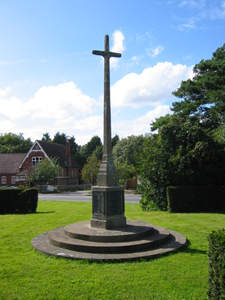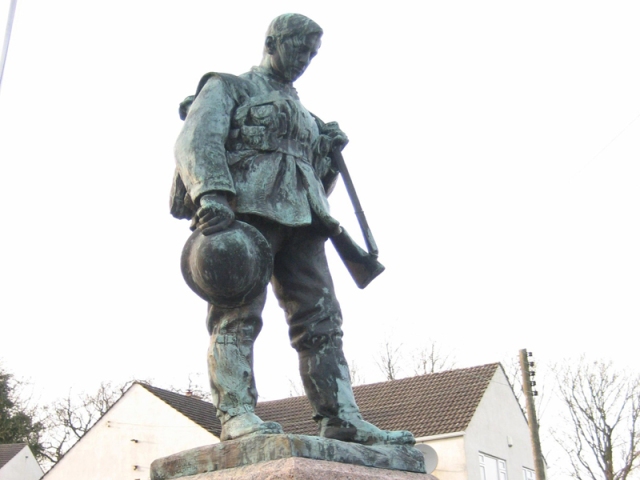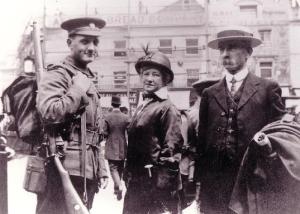As a historian, I have long been fascinated by memorials of all kinds, including the many war memorials that can be found in numerous towns and villages and other locations across the United Kingdom. On many occasions, when visiting some remote part of the country, I have often found myself being drawn to a local war memorial like a bear to honey.
I was therefore very pleased to see that the UK’s ‘War Memorials Trust’ (WMT) has just celebrated its 20th anniversary, and has issued a special edition of its well-written quarterly Bulletin to help explain some of the excellent work that the Trust has carried out since its creation.

The charity was registered on 7th May, 1997. Before that year, although there had been valuable work by both the much older Imperial War Museum and the Commonwealth War Graves Commission to help maintain war graves and military cemeteries, there was no dedicated organisation in the country that focused specifically on supporting (to use the WMT’s words) the ‘local custodians’ of the estimated 100,000 war memorials of all shapes and sizes in the UK.
Sadly, while some towns and villages in Britain have lovingly maintained their war memorials in tribute to those who made the ultimate sacrifice, recent decades have witnessed other memorials falling victim to neglect and disrepair, with a fair number even being destroyed. In 2003, for example, the Trust helped save a memorial that had been broken up and dumped in a builder’s skip. The WMT stored the broken pieces and then found a company who agreed to fund repairs.
According to the WMT’s Bulletin, the Trust today is now managing £4 million of UK and Scottish government centenary funding to help support the repair and conservation of Britain’s war memorial heritage, in addition to helping fund individuals and communities across the country.
Over the first 20 years of its existence, the WMT mainly relied on its funding coming from a combination of charitable trusts, foundations, and generous individuals (it has about 2,700 individual members today). There were also various fundraising events over the years, sometimes with talks by leading military and other historians. Naturally, it was often very challenging to get sufficient money to carry out all the work the WMT wished to do, but in 2002 the Trust received a significant boost to its fundraising when an article about the organisation and its determination to preserve war memorials appeared in a leading British daily newspaper, written by the late journalist David Graves. It led to over £10,000 being donated to the Trust by individuals.
Another initiative taken by the WMT, and welcomed by historians and other conservation experts, was to develop a youth-focused ‘Learning Programme’ which was aimed at schools, colleges and youth groups, and continues to thrive today. In 2011, sufficient funding had been secured to also appoint a Learning Officer and, since then, the Learning Programme has arguably become a core part of the WMT’s important work.
In addition, the WMT’s volunteer Conservation Officers have offered a wide range of free advice and guidance to anyone who has had concerns about the condition of memorials, or are in search of guidance on best conservation practice. As well as providing such invaluable advice to members of the public, in 2012 the WMT also set up a War Memorials Officers project. This has sought to identify relevant individuals to contact in each local authority across Britain, which in turn has also helped raise awareness of conservation issues in local communities.

Regrettably, one problem that has emerged in recent years, and has created additional pressure on the WMT’s limited resources, is theft: according to the WMT’s special Bulletin, the Trust has had to deal with a high number of reported thefts at war memorials across the UK, with metal elements such as plaques being stolen from a variety of memorials. In response, the WMT has started working with the SmartWater Foundation, which has provided free crime prevention fluid to war memorial custodians across the country. The problem was also raised at Parliamentary level, and the WMT helped provide advice to the All Parliamentary Group on Combating Metal Theft. Such work appears to be showing success, as there has been a reported decline in metal theft in 2016-17.
As the WMT has pointed out, and I am sure many historians will agree, war memorials in many ways are located in ‘shared spaces of remembrance’, whether it be at a cenotaph on a village green, a plaque inside a Church or Post Office, or at a cross or statue in the middle of a town, and such sites remain very much a part of Britain’s national historical culture.

The recent centenary of the First World War, which saw a wide range of events and exhibitions, also provided the WMT with an opportunity to produce further learning materials covering the key battles and other events of the war, including the location of the memorials that were subsequently constructed in tribute to the many thousands of soldiers who fought in the conflict. Building on this, and in recognition of the tremendous interest shown by the public in such aspects of our shared history, the WMT’s centenary Bulletin reveals that the Trust has now extended its educational provision to include wider historical events, as well as local history and present-day conservation issues.
I have no doubt that the WMT will continue to flourish in its conservation and educational work in future years, and will be equally as active when it comes to the centenary of the Second World War.
Dr. Steven Woodbridge is lecturer in History at Kingston University
(Images: the War Memorials Trust and WikiMedia Commons)

